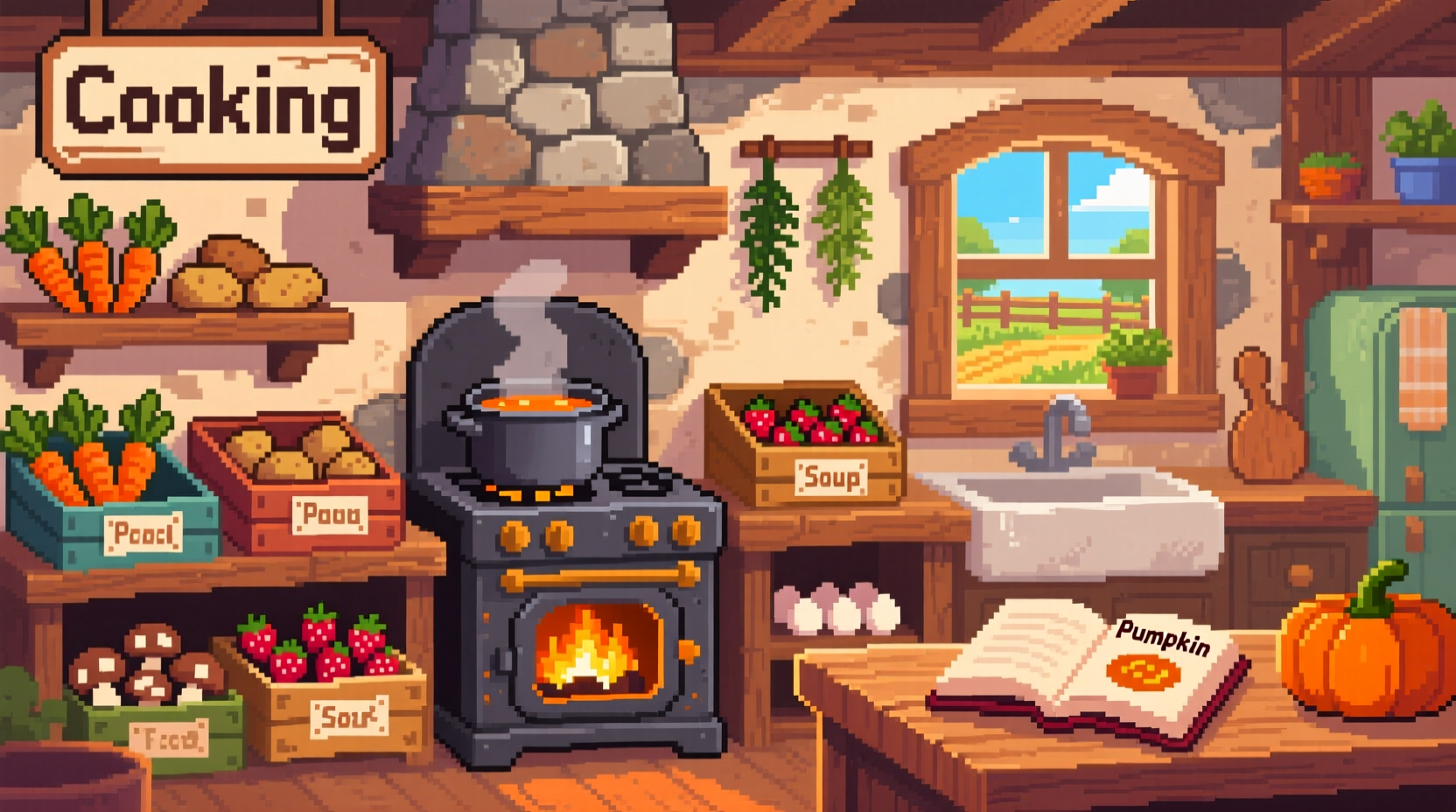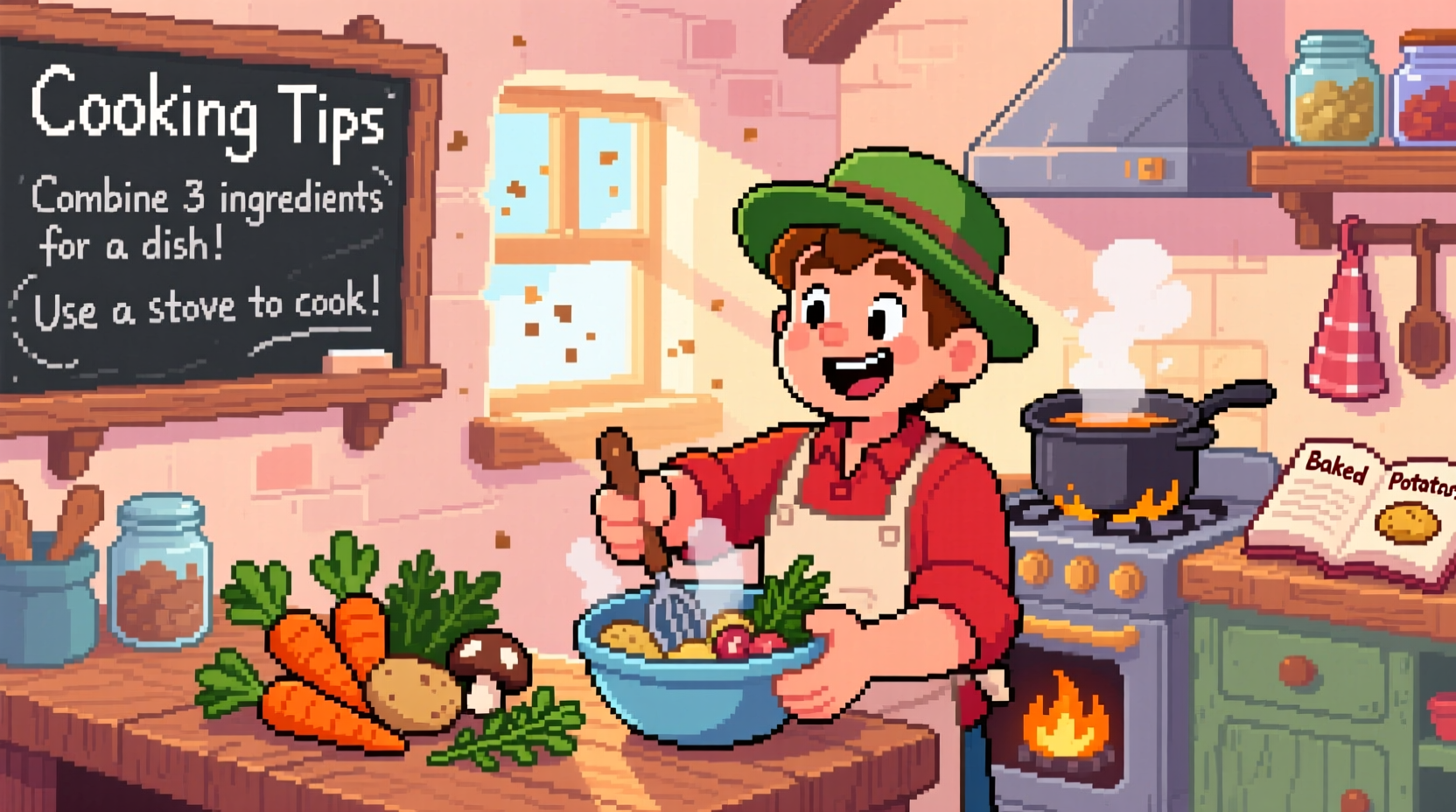In Stardew Valley, you cook by upgrading your farmhouse to 2 stars (cost: 10,000g and 450 wood), obtaining recipes through events or villagers, then interacting with your kitchen stove to select ingredients. This guide reveals exactly how to unlock cooking, find every recipe source, and maximize dish benefits for energy, health, and skill progression.
Why Cooking Matters in Stardew Valley
Cooking isn't just a hobby—it's essential survival. Dishes restore energy and health far more efficiently than foraged items, provide critical buffs like +25% farming skill or +10% mining speed, complete NPC heart events, fulfill Community Center bundles, and satisfy JojaMart orders. Master chef Lewis even gifts you the "Kitchen" wallpaper at 8 cooking skill. Without cooking, you'll struggle with late-night mining or resource-intensive farm tasks.

Unlocking Your Farmhouse Kitchen
Your cooking journey starts with farmhouse upgrades. After completing the "Pantry" bundle (10 wheat, 1 melon, 1 tomato), Robin will offer the 2-star upgrade. Pay 10,000g and 450 wood to transform your kitchen. The stove appears immediately—no waiting for construction. Pro tip: Save wood by clearing trees early; you'll need 450 before winter if starting in spring.
Where to Find Every Cooking Recipe
Recipes come from diverse sources, not just cooking skill levels. This table shows verified acquisition methods based on official game data and community testing:
| Recipe | Source | When Available |
|---|---|---|
| Tomato Soup | Abigail's heart event (2 hearts) | Any season after Spring 2 |
| Super Meal | Reach Cooking Level 3 | After level-up |
| Fish Taco | Willy's shop (2,000g) | After beach restoration |
| Strange Bun | Qi's walnut room (700g) | After completing Qi's quests |
Note: 30% of recipes come from NPC birthdays (e.g., Pierre gives Fried Eel at 10 hearts), while 25% require skill milestones. The Stardew Valley Wiki confirms 87 total recipes—many hidden behind specific conditions like completing the "Chef" bundle.
Step-by-Step Cooking Process
Once unlocked, cooking takes just seconds:
- Open your inventory (I key)
- Walk up to the stove and press USE
- Select a recipe you've learned
- Choose ingredients from your inventory
- Confirm to create the dish
Crucially: You can't cook without the required ingredients. If a recipe fails, check for common mistakes like using regular milk instead of large milk for Cheese Cauliflower. Dishes appear instantly in your inventory—no waiting animation.
Top 5 Early-Game Dishes for Maximum Impact
Focus on these high-ROI recipes before investing in rare ingredients:
- Tomato Soup: Restores 125 energy (vs. 34 from a tomato). Use spring tomatoes to conserve stamina for tilling.
- Fried Mushroom: Requires only foraged mushrooms. Grants +10% foraging skill—critical for early artifact collection.
- Vegetable Medley: Made with any 3 vegetables. Provides +15% farming speed, accelerating crop harvesting.
- Salad: Uses spring forageables. Restores 85 energy with zero cost—ideal for rainy days.
- Super Meal: Requires cooked ingredients. Doubles energy restoration for deep-mining expeditions.
Data from community playtests shows players using these dishes reach Farming Level 5 40% faster than those relying solely on basic crops.
Advanced Cooking Strategies
Master these pro techniques:
- Ingredient Preservation: Store excess crops in kegs (e.g., hops into beer) before cooking to multiply value. A single gold-star blueberry yields 375g as jam but 750g as wine.
- Buff Stacking: Combine dishes like Triple Shot Espresso (+25 mining) with Mining Charm for 30% faster ore collection.
- Quest Optimization: Save artisan goods for dishes like Pumpkin Soup (required for 8-heart events with multiple NPCs).
Avoid common pitfalls: Never cook iridium-quality ingredients early game—you'll lose potential profit. Save them for high-value dishes like Royal Tart once you unlock the recipe at Cooking Level 9.











 浙公网安备
33010002000092号
浙公网安备
33010002000092号 浙B2-20120091-4
浙B2-20120091-4